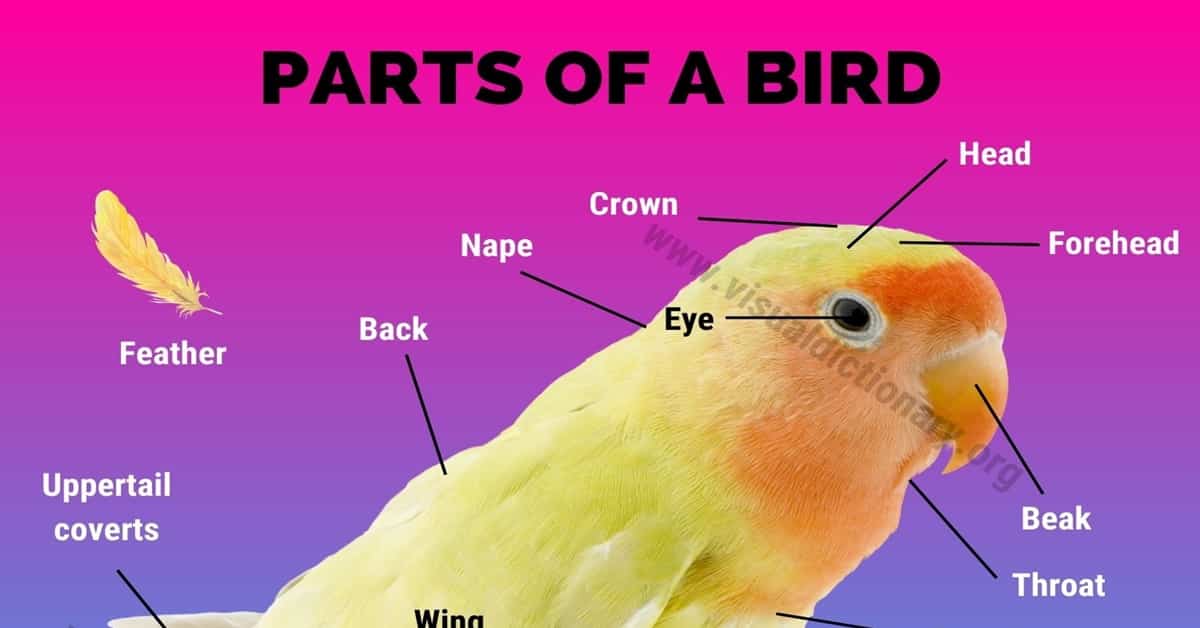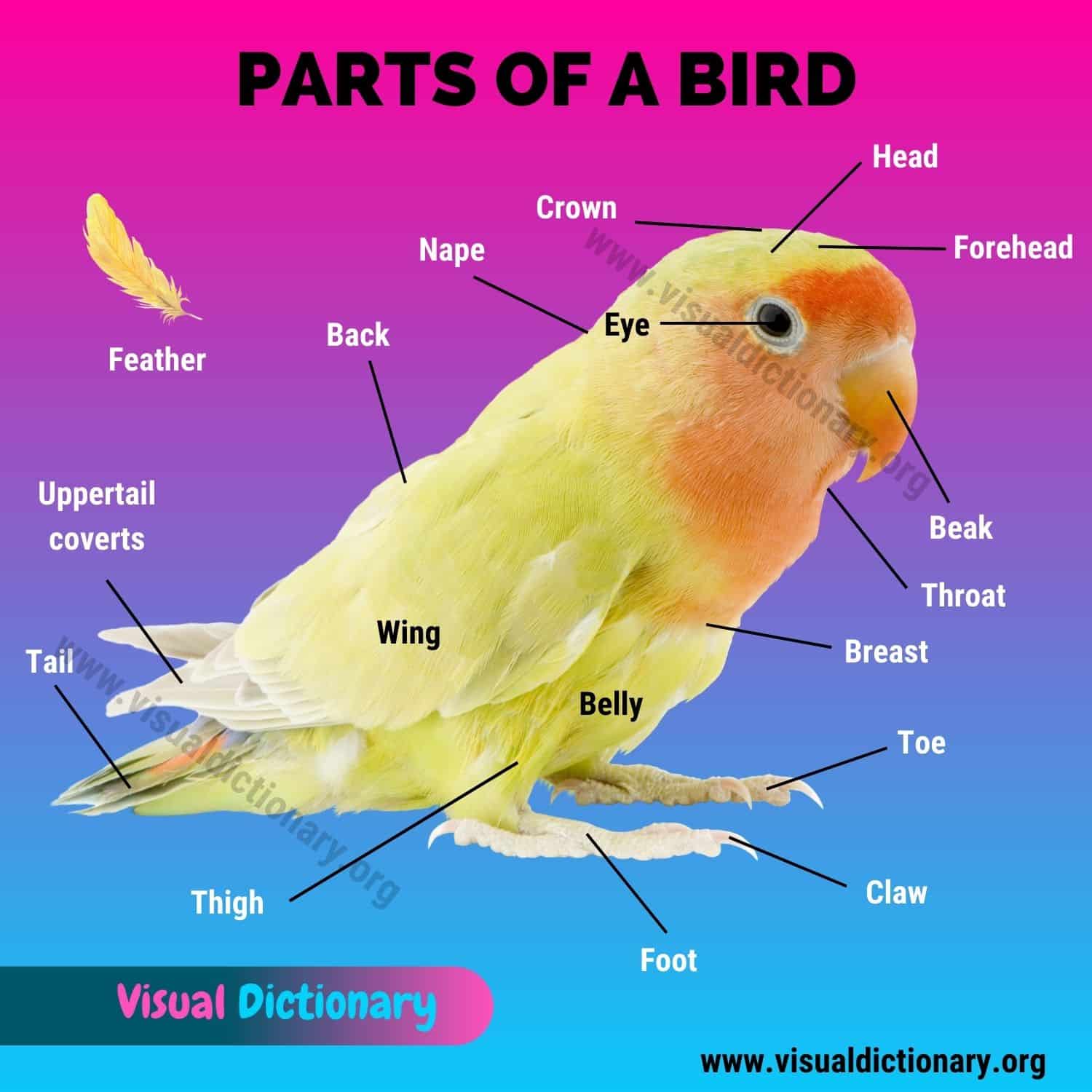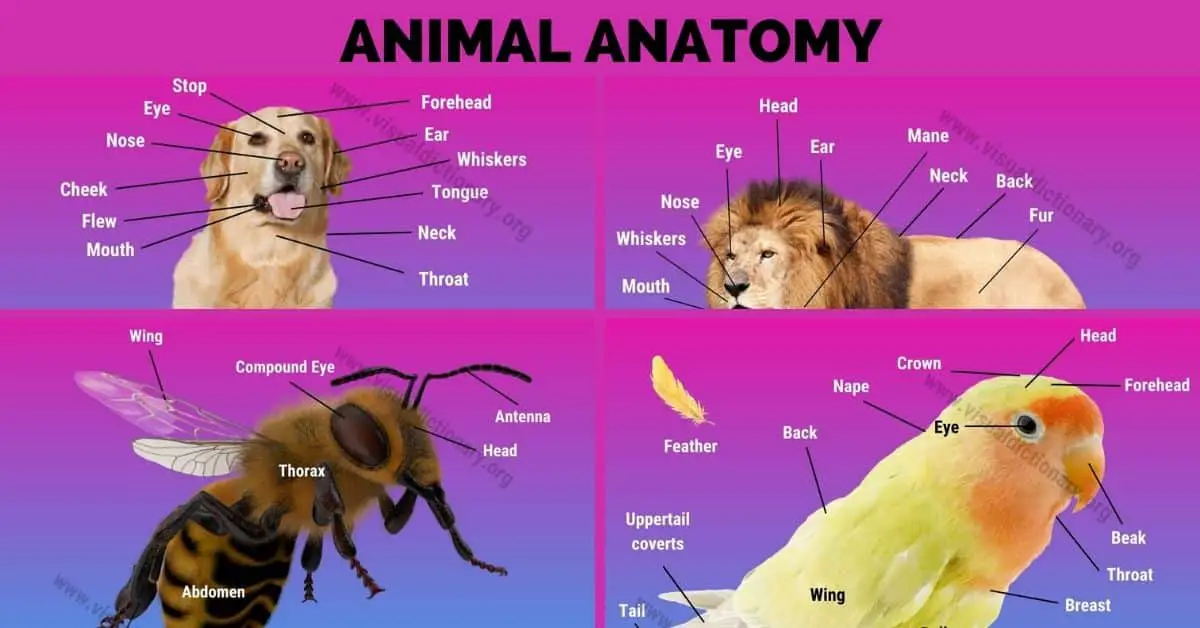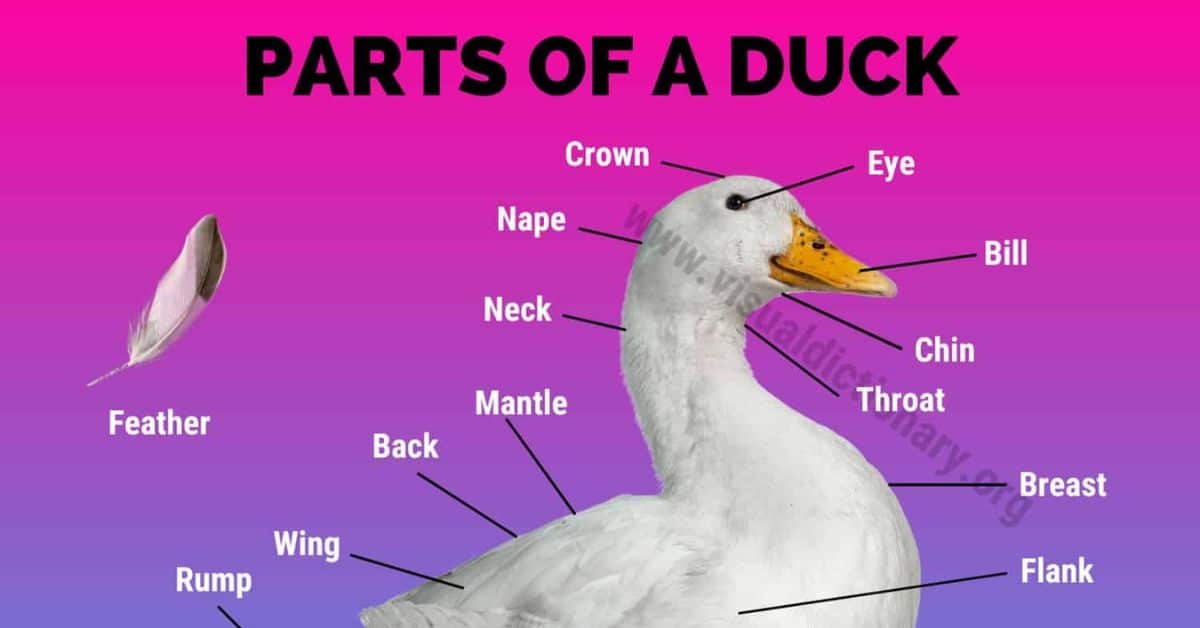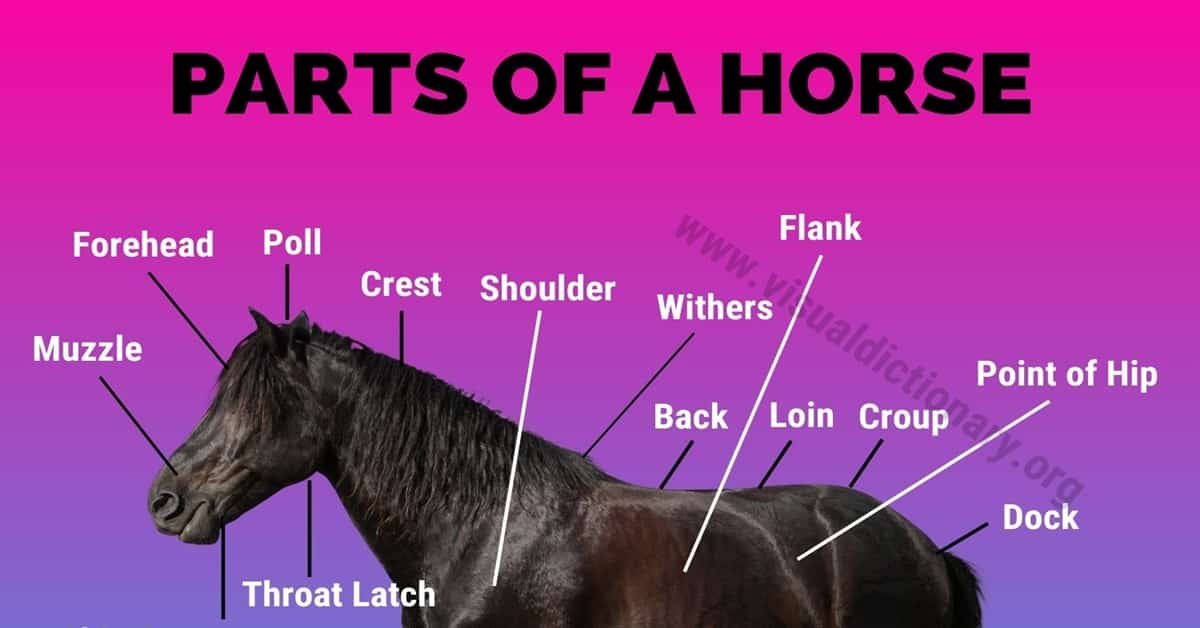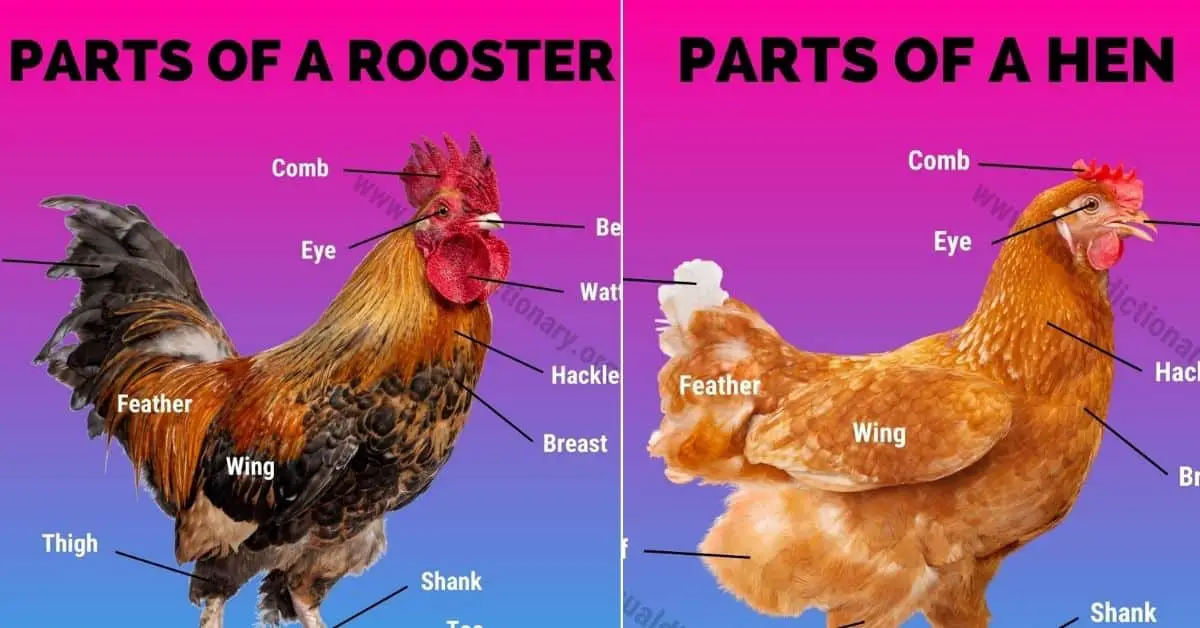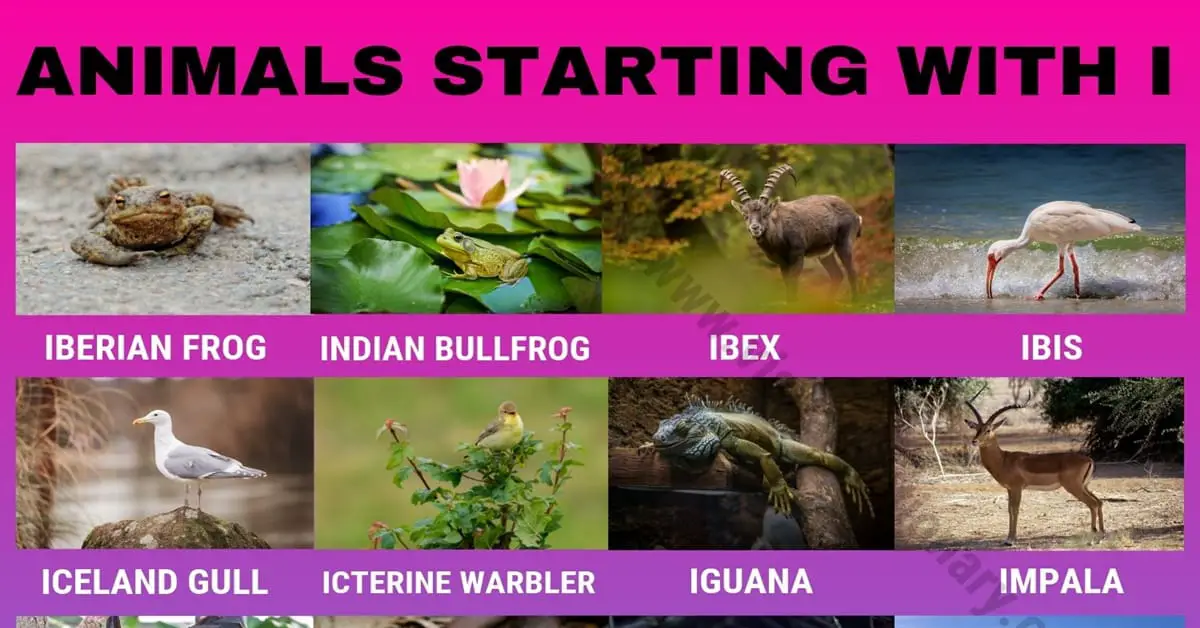Have you ever wondered about the different parts of a bird? As English learners, it’s essential to expand our vocabulary and knowledge of the world around us. In this article, we’ll be exploring the external anatomy of birds, specifically the 20 unique parts that make up these feathered creatures.
From the bill to the tail, we’ll cover each part of a bird’s exterior and how they contribute to the bird’s overall appearance and function. Knowing these parts is crucial for identifying different bird species, whether you’re a bird enthusiast or simply enjoy observing these beautiful creatures in nature.
So, whether you’re a beginner or an experienced bird watcher, join us as we dive into the fascinating world of bird anatomy. By the end of this article, you’ll have a better understanding of the different parts that make up a bird and be able to identify them with ease. Let’s get started!
Table of Contents
Birds
Birds are warm-blooded vertebrates with feathers, a beak, two legs, and wings. They come in a wide variety of sizes, colors, and shapes. There are over 10,000 species of birds in the world, ranging from tiny hummingbirds to massive ostriches.
One of the most distinctive features of birds is their ability to fly. Birds have lightweight, hollow bones that help them stay aloft. They also have powerful muscles that enable them to flap their wings and generate lift.
Another unique characteristic of birds is their feathers. Feathers serve many purposes, including insulation, waterproofing, and flight. They come in a wide variety of shapes and sizes, from tiny down feathers to large flight feathers.
Birds also have a highly specialized respiratory system that allows them to extract oxygen from the air more efficiently than most other animals. This system includes air sacs that help circulate air through the lungs and deliver oxygen to the body.
Finally, birds have a beak instead of teeth. The shape and size of a bird’s beak can tell you a lot about its diet and lifestyle. For example, birds with long, thin beaks are often adapted for probing into flowers or crevices to find food, while birds with short, strong beaks are better suited for cracking open seeds or nuts.
Bird Anatomy
The bird lives on land and in the air. Some live on the surface of the water. They are found on all seven continents.
Feathers
Feathers are one of the most distinctive features of birds. They are made of keratin, the same protein that makes up our hair and nails. Feathers come in different shapes, sizes, and colors, and they serve various functions, such as insulation, waterproofing, and flight. The arrangement of feathers on a bird’s body is called its plumage, and it can be used to identify different species.
Wings
Wings are the primary feature that sets birds apart from other animals. They are specially designed for flight, with a lightweight structure and a complex system of muscles, tendons, and bones. The shape and size of wings vary among different bird species, depending on their flight style and habitat. Some birds, such as eagles and hawks, have broad wings for soaring, while others, like hummingbirds and swifts, have narrow wings for hovering and maneuvering.
Tail
The tail is another important feature that helps birds maintain balance and control during flight. It consists of a series of feathers arranged in a fan-like shape, and it can be used for steering, braking, and display. The length and shape of the tail vary among different bird species, and they can be used to distinguish between males and females, juveniles and adults, and breeding and non-breeding individuals.
Beak
The beak, or bill, is a unique feature of birds that serves multiple functions, such as feeding, grooming, and defense. It is made of bone and covered with a layer of keratin, which gives it strength and durability. The shape and size of the beak vary among different bird species, depending on their diet and lifestyle. Some birds, such as woodpeckers and toucans, have long, sturdy beaks for drilling and probing, while others, like finches and sparrows, have short, pointed beaks for cracking seeds and insects.
Eyes
Birds have highly developed eyesight, which allows them to navigate, hunt, and communicate effectively. Their eyes are large and round, with a high density of photoreceptors that enable them to see colors, shapes, and movements in great detail. The position and shape of the eyes vary among different bird species, depending on their visual needs. Some birds, such as owls and eagles, have forward-facing eyes for binocular vision and depth perception, while others, like pigeons and ducks, have side-facing eyes for panoramic vision and wide-angle views.
Legs and Feet
Birds have a unique skeletal structure that allows them to walk, run, perch, and swim. Their legs are covered with scales and feathers, and they are adapted to different types of terrain and movement. The feet are also specialized for various functions, such as perching, grasping, swimming, and hunting. The shape and size of the legs and feet vary among different bird species, depending on their lifestyle and habitat. Some birds, such as ostriches and emus, have long, powerful legs for running, while others, like ducks and geese, have webbed feet for swimming.
Parts of a Bird | List
- Forehead
- Foot
- Beak
- Eye
- Chin
- Throat
- Wing
- Thigh
- Belly
- Toe
- Claw
- Crown
- Uppertail coverts
- Tail
- Rump
- Back
- Nape
- Feather
- Breast
- Head
Frequently Asked Questions
What are the physical features of a bird’s beak?
A bird’s beak is a unique and important feature that varies depending on the bird’s diet and habitat. Beaks can be long and pointed for spearing prey, short and sturdy for cracking nuts, or thin and delicate for sipping nectar. The upper and lower mandibles of a bird’s beak are made of bone and covered in a hard, keratinized layer that protects them from wear and tear.
What are the different types of feathers on a bird?
Birds have several types of feathers, each with a specific function. Contour feathers are the large feathers that cover a bird’s wings and body, providing insulation and aerodynamic lift. Down feathers are smaller, fluffy feathers that trap heat and keep a bird warm. Filoplumes are hair-like feathers that help a bird sense its surroundings, and bristle feathers protect a bird’s eyes and face from debris.
How do a bird’s wings work?
A bird’s wings are specially adapted for flight. The primary feathers at the end of the wing provide lift, while the secondary feathers closer to the body help with steering and maneuvering. The shape of a bird’s wing is also important for flight – some birds have long, narrow wings for soaring, while others have short, broad wings for quick bursts of speed.
What is the function of a bird’s tail feathers?
A bird’s tail feathers are important for balance and steering during flight. The number and shape of a bird’s tail feathers can vary depending on the species – some birds have long, flowing tail feathers for display, while others have short, stiff tail feathers for stability.
What are the external features of a bird’s feet?
A bird’s feet are adapted for a variety of tasks, from perching to hunting. Most birds have four toes, with three pointing forward and one pointing backward. The shape and size of a bird’s feet can vary depending on its habitat – birds that live near water may have webbed feet for swimming, while birds that live in trees may have sharp claws for gripping branches.
What is the purpose of a bird’s eyes?
A bird’s eyes are important for navigation, hunting, and communication. Birds have large eyes relative to their body size, allowing them to see with great clarity and detail. Some birds also have specialized adaptations, such as a third eyelid for protection, or a fovea for enhanced visual acuity.
Related terms:
